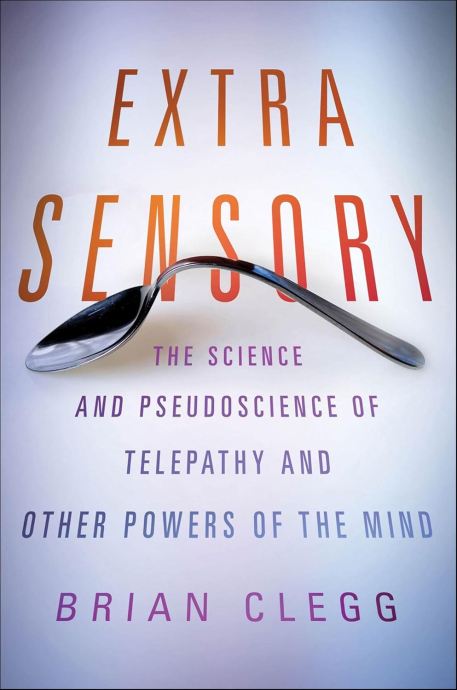
Evidence suggestive of survival after bodily death and poltergeists does not interest Clegg. Instead he has tried to focus on phenomena that, in his opinion, might have a physical explanation. In passing, contemporary mediums are however dismissed as cold readers.
Clegg reminds the reader of the wellknown telepathy tests of George A. Smith and Douglas Blackburn, and relies on Blackburn's confession (reprinted in Kurtz, 1985), forgets to mention Smith's denial of trickery, and claims that neither of the men was a stage magician. The magic historian Milbourne Christopher's (1970) account does however make it quite clear that they were mentalists. Needless to say, their contemporary Washington Irving Bishop was not as Clegg claims one of the first mind readers, although he was one of the better-known performers who relied on muscle-reading.
He turns to J. B. Rhine's experiments and makes several erroneous statements: for example he claims that Rhine coined the term psi and confuses problems with some ESP card sets (reviewed by Medhurst, 1969) with the original ESP cards. When commenting on Rhine's experiments he relies on the first edition of C. E. M. Hansel's (1966) book and appears to be unaware of both the later editions of it (i.e. Hansel, 1980; 1989) and the exchanges they provoked.
Relying on Martin Gardner's criticism (reprinted in Gardner, 1981), he comments on Charles Tart's attempts to enhance psi by providing feedback. Clegg also briefly comments on the Maimonides Medical Center dream ESP studies, but his main “criticism” seems to be that since pictures can generate a wide variety of associations, the hits can appear to be more impressive than they really are. Needless to say Clegg finds it easy to criticise mathematician/physicist John Taylor's (1975) tests of metal-bending, but appears to be unaware of Taylor's (1980) attitude change. Uri Geller is also a subject of Clegg's attention, and while discussing the tests with him at Stanford Research Institute (Targ & Puthoff, 1974) he relies on the magician James Randi's (1975) book. Clegg relies on the first edition rather than the revised edition (i.e. Randi, 1982).
In short Clegg presents a hodgepodge. Though readable, the text is quite often influenced by the wellknown sceptics Hansel, Gardner and Randi – none of them notable as reliable sources – and the responses to their criticisms are generally not properly acknowledged. Perhaps it is inappropriate to give away the ending, but Clegg concludes that “... the existing experiments have demonstrated nothing more than coincidence, artifacts of the experimental design, misunderstanding, and fraud” (p. 276). Personally I do not believe that Clegg knows enough about parapsychology to arrive at any conclusion, but he is scheluded to participate in a panel debate “Has Parapsychology Achieved Anything?“ later this year at the Seriously Strange conference, 7-8 September.
References
Christopher, M. (1970). ESP, seers & psychics. New York: Thomas Y. Crowell Company.
Gardner, M. (1981). Science, good, bad and bogus. New York: Prometheus books.
Hansel, C. E. M. (1966). ESP. A scientific evaluation. New York: Scribner's.
Hansel, C. E. M. (1980). ESP and parapsychology. New York: Prometheus books.
Hansel, C. E. M. (1989). The search for psychic power. New York: Prometheus books.
Kurtz, P. (ed.) (1985). A skeptic's handbook of parapsychology. New York: Prometheus Books.
Medhurst, R. G. (1969). Note on the 'ESP' cards designed in the parapsychology laboratory, Duke univeristy. Journal of the Society for Psychical Research, 45, 81-85.
Randi, J. (1975). The Magic of Uri Geller. New York: Ballantine Books.
Randi, J. (1982). The Truth about Uri Geller. New York: Prometheus Books.
Targ, R., & Puthoff, H. E. (1974). Information transfer under conditions of sensory shielding. Nature, 251, 602-607.
Taylor, J. G. (1975). Superminds. New York: Warner Books.
Taylor, J. G. (1980). Science and the supernatural. New York: Dutton.

